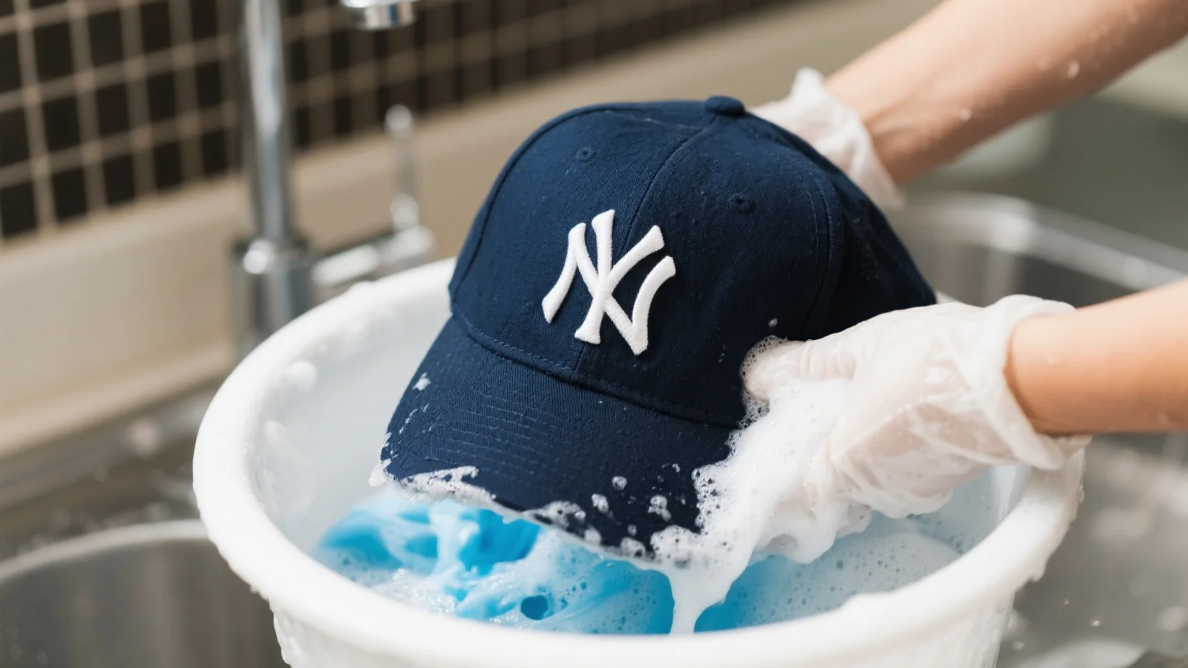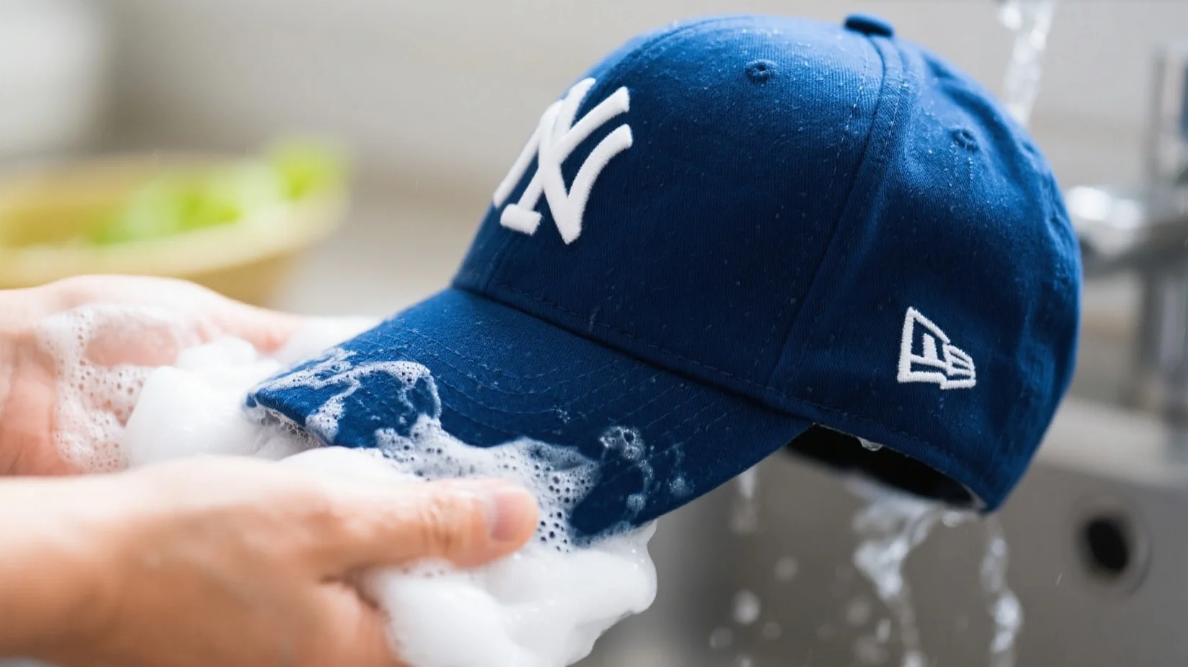
Can You Wash a Baseball Cap? Your Ultimate FAQ Guide
Baseball caps are a staple accessory, but over time, they can accumulate dirt, sweat, and stains. One common question among cap owners is, “Can you wash a baseball cap?” The answer is yes, but the process varies depending on the material, construction, and level of dirtiness. In this article, we’ll answer frequently asked questions and provide detailed washing instructions to help you keep your cap clean without damaging it.

1. Can You Wash All Types of Baseball Caps?
1.1 Material Matters
Cotton and Polyester Caps: These common materials are generally safe to wash. They can withstand both hand washing and machine washing, but it’s crucial to follow proper techniques to avoid shrinking or warping.
Wool and Felt Caps: Washing wool or felt caps can be risky, as they are prone to shrinking and matting. Hand washing with cold water and a mild detergent is usually the safest option, and avoiding machine washing and drying is essential.
Leather or Synthetic Leather Caps: Leather caps should never be submerged in water or washed in a machine. Instead, use spot cleaning with a damp cloth and a leather cleaner to remove dirt and stains.
Mesh or Foam-Front Caps: Caps with mesh backs or foam fronts require gentle handling. The mesh can be delicate and prone to tearing, while the foam may lose its shape if not washed carefully.
1.2 Check the Care Label
2. How Do You Wash a Baseball Cap by Hand?
2.1 Gather Your Supplies
Mild Detergent: Use a mild liquid detergent suitable for the cap’s material. Avoid bleach, fabric softeners, or harsh chemicals, as they can damage the fabric or color.
Warm Water: Fill a basin or sink with lukewarm water—hot water can cause shrinkage or fading.
Soft Brush or Sponge: A soft-bristled brush or a soft sponge helps remove dirt and stains without scratching the fabric.
Towel: Prepare a clean, dry towel for drying and reshaping the cap.
2.2 Pre-Treat Stains
2.3 Wash the Cap
Submerge the cap in the soapy water and gently swish it around to soak the fabric.
Use your hands or a soft brush to scrub the cap gently, focusing on dirty areas like the sweatband, brim, and crown.
For stubborn dirt, you can lightly lather the detergent on the problem spots and rinse thoroughly.
2.4 Rinse and Remove Excess Water
Rinse the cap thoroughly with cool water until all the soap is removed. Make sure to squeeze out the water gently, avoiding wringing or twisting the cap, which can cause it to lose its shape.
Place the cap on a clean towel and gently press it to absorb excess water.
2.5 Dry and Reshape the Cap
Reshape the cap while it’s still wet, gently pulling it back into its original form.
Place the cap on a flat surface or a hat rack to air dry in a well-ventilated area away from direct sunlight or heat sources. Avoid using a clothes dryer, as the heat can damage the fabric and cause shrinkage.
Flip the cap occasionally to ensure even drying and maintain its shape.

3. Can You Wash a Baseball Cap in the Washing Machine?
3.1 Choose the Right Caps
3.2 Protect the Cap
Place the cap inside a mesh laundry bag or a pillowcase to protect it from the washing machine’s agitator and other clothes. This helps prevent tangling, stretching, and abrasion.
If possible, remove any detachable parts, such as chin straps or snapback closures, before washing.
3.3 Select the Right Wash Settings
Set your washing machine to the gentle or delicate cycle with cold water. This reduces the agitation and heat, minimizing the risk of damage to the cap.
Use a small amount of mild detergent—avoid using fabric softeners, as they can leave a residue on the fabric and affect its breathability.
3.4 Dry the Cap
Never put the cap in the dryer. Instead, remove it from the washing machine immediately after the cycle ends and air dry it using the same method as hand-washed caps. Reshape the cap while wet and place it on a flat surface or a hat rack to dry.
4. How Do You Clean a Baseball Cap with a Stiff Brim?
4.1 Hand Wash Preferred
4.2 Support the Brim During Drying
4.3 Consider a Hat Shaper
5. How Do You Remove Sweat Stains from a Baseball Cap?
5.1 Baking Soda Paste
Mix baking soda with a small amount of water to create a thick paste.
Apply the paste to the sweat-stained areas of the cap and let it sit for 15–20 minutes.
Gently scrub the stains with a soft brush or sponge, then rinse the cap thoroughly with water.
5.2 Vinegar Solution
Dilute white vinegar with an equal amount of water in a spray bottle.
Spray the vinegar solution onto the sweat stains and let it sit for 10–15 minutes.
Wash the cap as usual using a mild detergent and rinse it well to remove the vinegar smell.
5.3 Lemon Juice
Squeeze fresh lemon juice onto the sweat stains and let it sit in the sunlight for a few hours (the sun’s UV rays can help bleach the stains).
Rinse the cap thoroughly with water and wash it with a mild detergent to remove any remaining lemon juice.
6. How Often Should You Wash a Baseball Cap?
Regularly Worn Caps: If you wear your cap daily, consider washing it every 1–2 weeks to remove sweat, dirt, and odors.
Occasionally Worn Caps: Caps that you wear less frequently can be washed every 1–2 months or as needed, especially if they start to look dirty or develop a smell.
Avoid Overwashing: Overwashing can cause premature wear and tear on the cap. Try to brush off surface dirt regularly between washes to extend the cap’s lifespan.
7. Tips for Maintaining Your Baseball Cap
Store Properly: When not in use, store your cap in a cool, dry place away from direct sunlight. You can use a hat rack, hook, or hat box to maintain its shape and prevent crushing.
Brush Regularly: Use a soft-bristled brush to remove surface dirt and debris from the cap. This helps keep the cap clean and reduces the need for frequent washing.
Handle with Care: Avoid pulling, stretching, or bending the cap excessively, as this can damage the fabric and structure. When putting on or taking off the cap, hold it by the brim or the back rather than pulling on the crown.














